The concept of home revolves around cherishing moments with our dear ones, free from any concerns. To manifest this vision, we must adopt an interior design approach that places warmth, intimacy, and a natural ambiance at its core.
To your amazement, the rustic style serves as the bridge to attain this aspiration. It blends a warm atmosphere, an earthy sensibility, and vintage furnishings into its decor.
In this space, we’ve outlined the fundamental principles for crafting a Rustic interior design style.
Basic Rules of Rustic Interior Design Style
The rustic interior design style embraces a color palette that evokes a sense of nature. Additionally, it makes extensive use of natural materials such as the following:
1. Leather or suede

In Rustic style, a leather or suede chair is a must-have material.
Certainly, leather is a highly favored natural material as it tends to improve with age. The older it becomes, the higher its quality becomes.
There are even those who contend that when it acquires a scratch or a tear, such imperfections add value to both the chair and the overall Rustic interior design.
To enhance the natural ambiance, a set of textured pillows or a handcrafted rug makes an excellent complement to the chair.
2. Wooden floors-furniture, branches, bark or twigs, logs
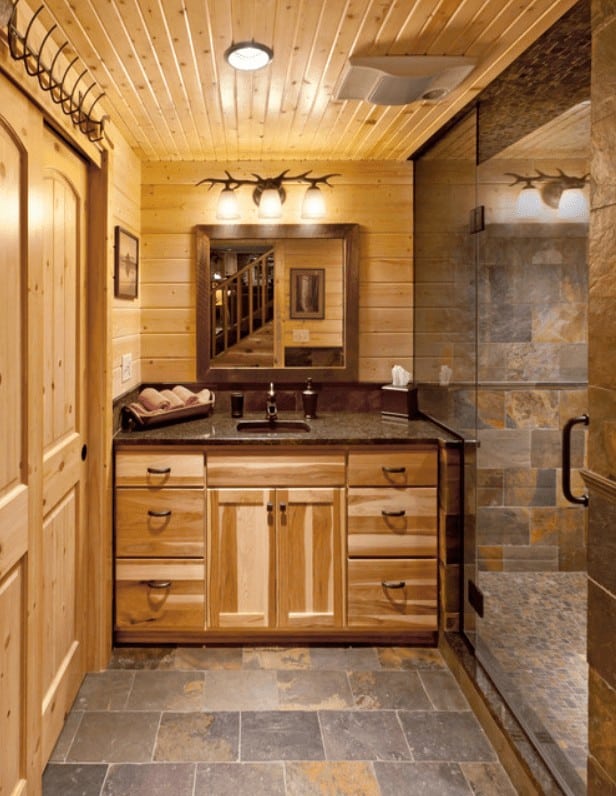
3. Pewter or metals with patina
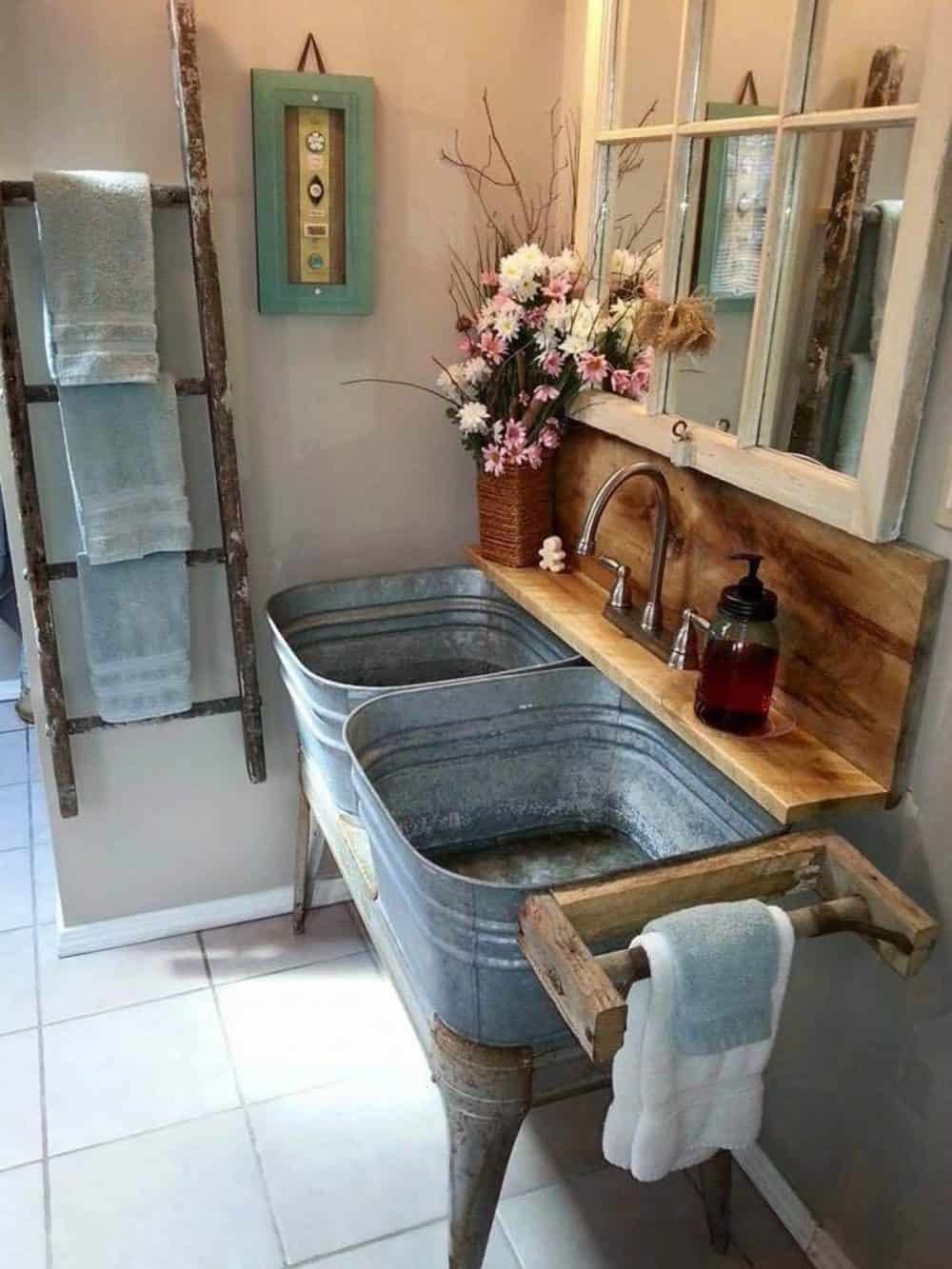
4. Wrought iron or rusted metals
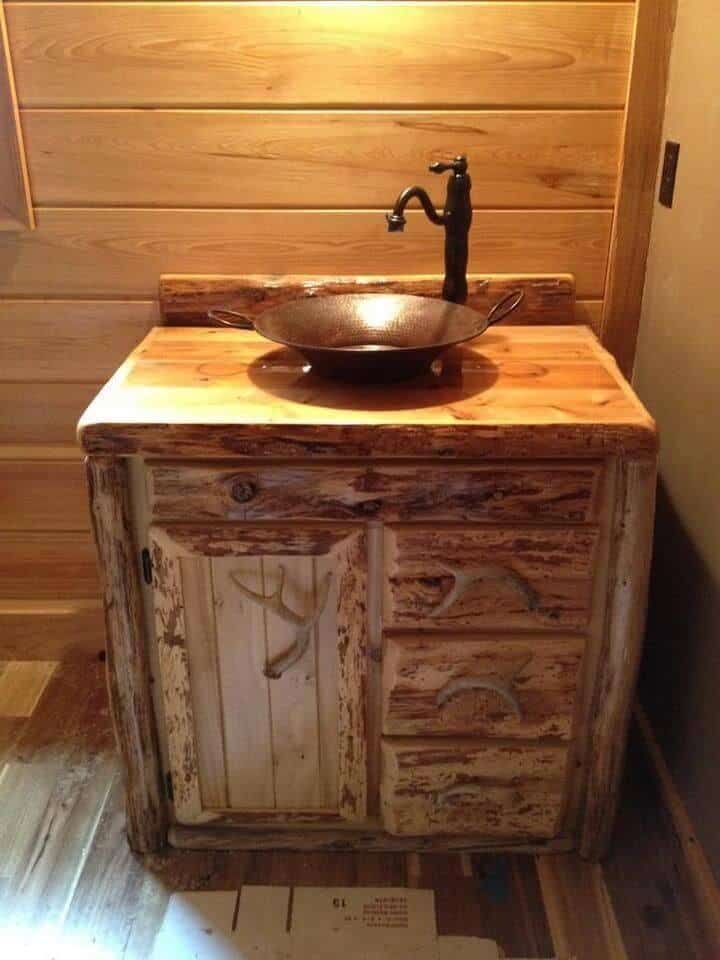
5. Natural fabrics like cotton, linen, hemp, wool or animal hides
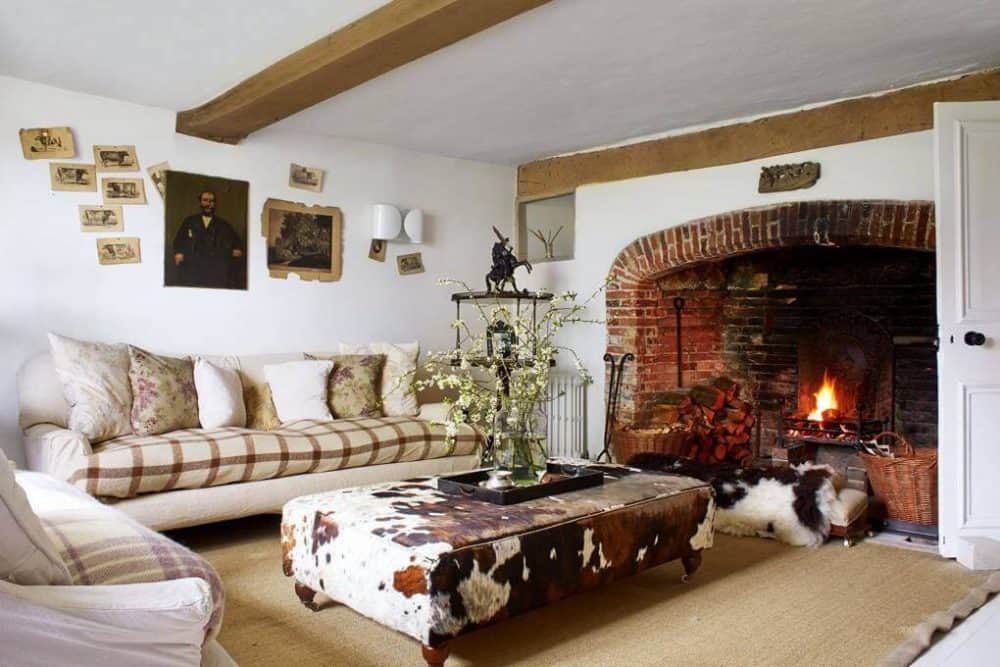
After discussing furniture, let’s shift our focus to the fabrics employed in Rustic design. Fabrics serve a crucial purpose, as they breathe life into Rustic style.
At times, the distressed wood or unfinished stones used in Rustic interiors can impart an unfinished quality.
To address this issue, fabrics like cotton, linen, hemp, wool, or even animal hides can help soften the roughness and complete the Rustic look.
6. Stone, rocks or concrete

7. Outdoor & garden elements
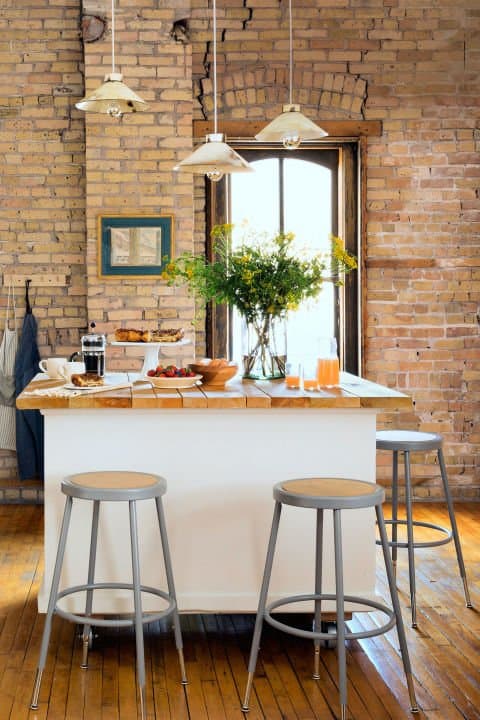
Gardens, in particular, serve to amplify the natural ambiance within this Rustic-style house. Complementing wooden materials and distressed rugs, the garden’s presence imparts that cozy cabin-in-the-woods sensation.
Characteristics of Rustic Style
Having addressed the fundamental principles of Rustic style design, we now present a selection of distinctive features that define this style. Here they are:
1. Furniture
When it comes to furniture, we often think of materials like wood, iron, and metal. Consider wood, for instance.
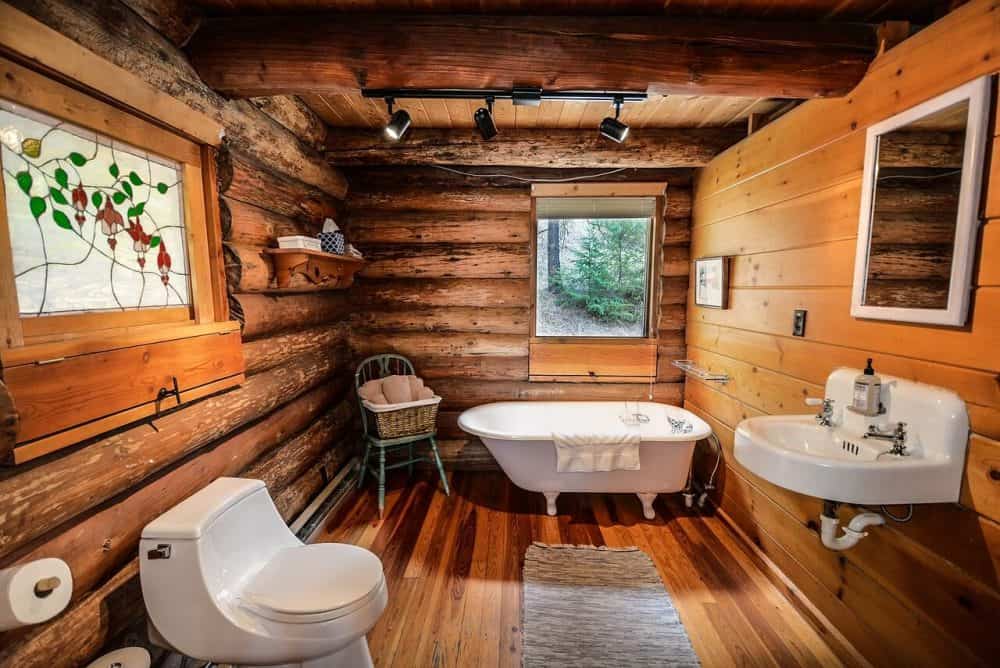
Wood is a favored material in Rustic design due to its natural character, which contributes to the strong earthy feel essential for this style.
In many Rustic designs, wood is intentionally left rough, distressed, or weathered to create a timeworn appearance, a sought-after quality by Rustic enthusiasts.
To maintain this appearance, other materials like iron or metal are often used, but they should be combined with wood because iron or metal can introduce an industrial feel rather than the desired country or rustic ambiance.
To further enhance the rustic feel, additional materials such as bamboo, rattan, clay, paper, glass, wool, cotton, and more can be incorporated into the design.
A complete Rustic style typically involves the integration of various elements within a single room. It’s uncommon to find an all-wood or all-stone Rustic house. Mixing and matching different materials and elements, such as leather chairs and rugs, often result in a more compelling Rustic design.
2. Structural
Let’s shift our focus away from furniture and delve into the structural aspects of Rustic design. Typically, a Rustic home features exposed beams.
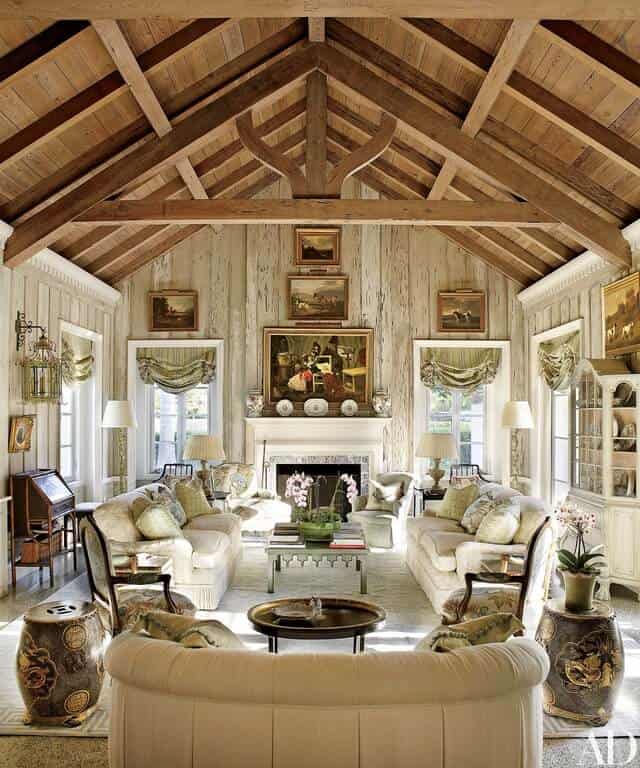
Exposed beams are commonly found in the spacious areas of the house, such as the living room and dining room, which are designed to accommodate family gatherings. Additionally, you’ll often see these beams adorning the kitchen. They impart a sense of strength and durability to the space, counterbalancing the weathered appearance of the rustic furniture.
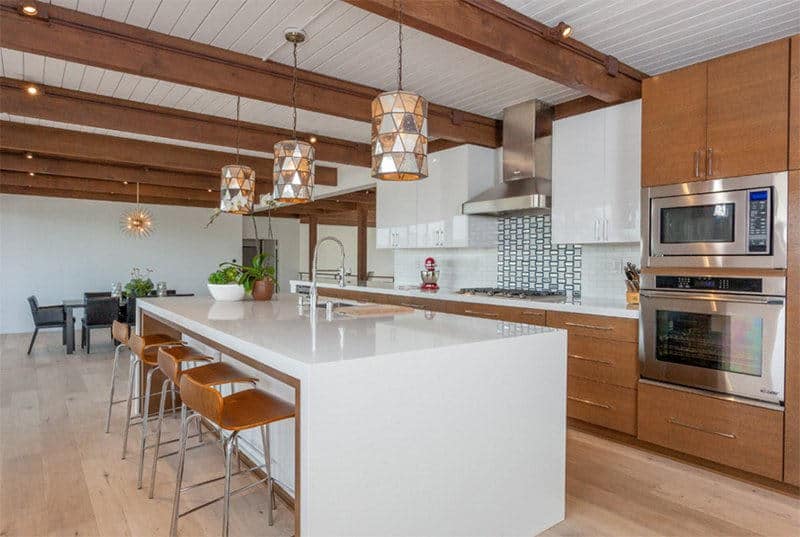
Another characteristic feature of Rustic homes is the flooring. In the realm of Rustic interior design, two flooring options reign supreme: hardwood and stone.
Your choice between the two depends largely on the ambiance you wish to create. If you’re aiming for a cozy cabin atmosphere, hardwood floors are the perfect fit. On the other hand, when you’re yearning for a Rustic-country feel, opting for stone flooring is an excellent decision.
Especially when the stone floor is strategically placed around a fireplace, it can amplify the warmth of the surrounding space, making it a particularly inviting choice during the winter months.